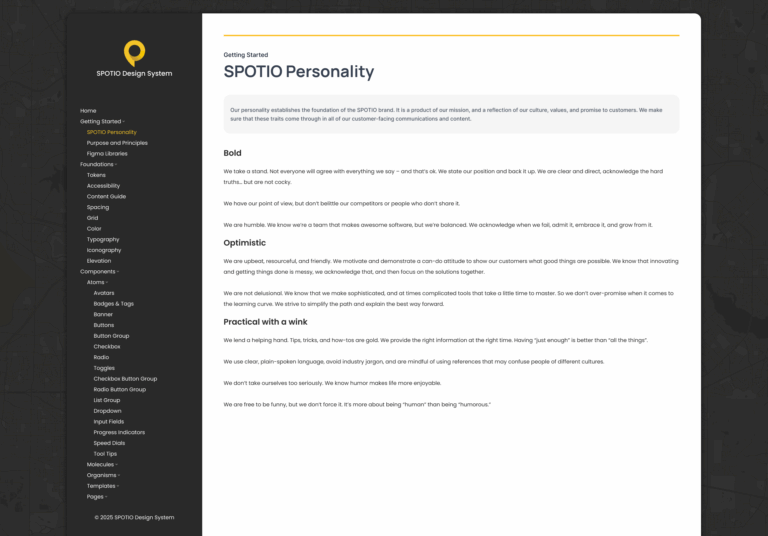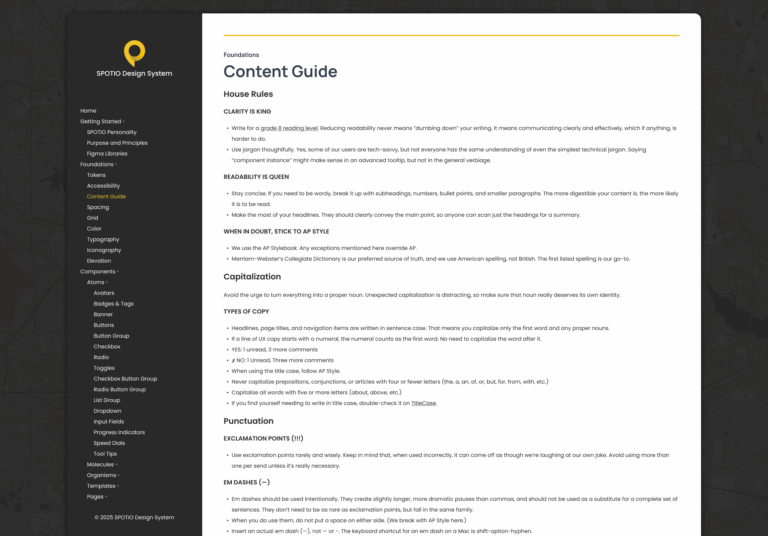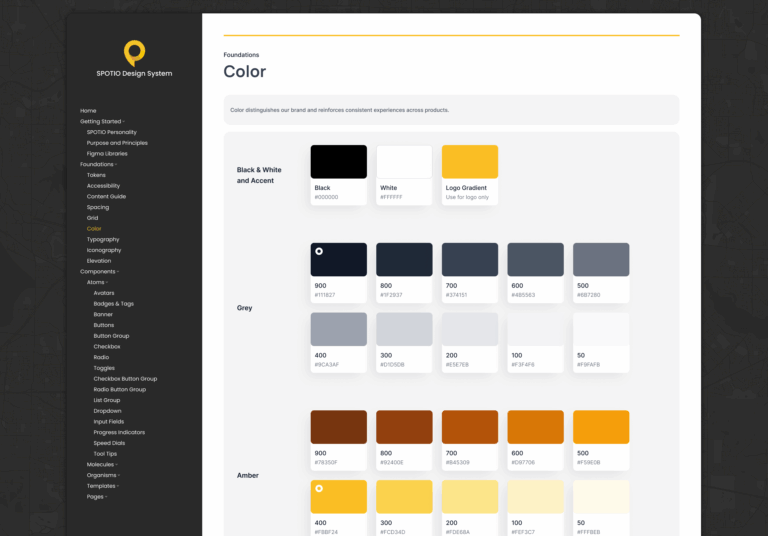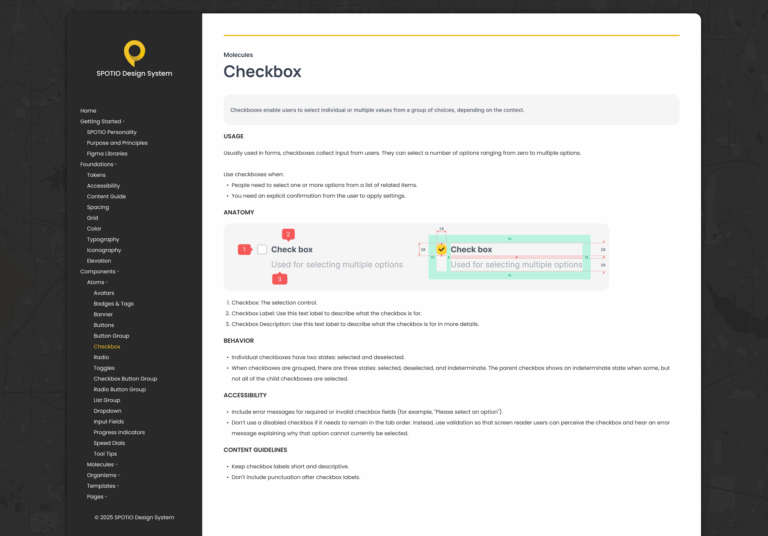Design System at Scale
COMPONENT ARCHITECTURE / DESIGN TOKENS / FIGMA LIBRARIES / CROSS-FUNCTIONAL GOVERNANCE / DOCUMENTATION & STANDARDS
Role: Design System Lead
Teams: Product, Engineering, QA
Creating Consistency & Efficiency
A scalable design system forms the backbone of a consistent, efficient user experience. By standardizing components, styles, and interaction patterns, it speeds up delivery, reduces duplication, and enables seamless collaboration between design and development. This initiative was built with scalability, brand consistency, and developer efficiency at its core.
Project Overview
I led the end-to-end creation of a company-wide Design System—from auditing legacy UI patterns to full integration with code via Storybook. This system introduced a unified visual language and significantly improved speed, scalability, and cross-team alignment.
The Challenge
Before implementing the Design System, the company faced several UX/UI challenges:
- Visual inconsistencies across Web and Mobile platforms
- Lack of documentation, creating delays in handoffs
- Brand fragmentation due to unmanaged growth
My Role
As a Design System Lead, I was responsible for:
- Researching and defining the foundational principles of the Design System.
- Designing scalable UI components, patterns, and guidelines.
- Collaborating with developers to ensure smooth implementation.
- Creating detailed documentation for designers and developers.
- Driving adoption through stakeholder alignment, workshops, and hands-on onboarding.
Process & Approach
Research & Analysis
I audited existing UI patterns and workflows, identified inconsistencies, and gathered pain points from developers and stakeholders to inform the system’s structure.
Defining Core Principles
To ensure the Design System aligned with the company’s brand and product goals, I established core principles, including:
- Scalability – Designed components to support long-term product evolution.
- Accessibility – Built for WCAG compliance from the ground up.
- Consistency – Unified design patterns across all platforms.
- Efficiency – Streamlined design-dev workflows and reduced redundancy.
Component Library & Guidelines
I designed a robust component library, including:
- Typography, Color Palette, and Iconography
- Buttons, Forms, Cards, Modals, and Navigation Patterns
- Spacing, Grids, and Layout Guidelines
Every component included detailed usage guidance, best practices, and code references—bridging the gap between design intent and implementation.
Implementation & Collaboration
Worked hand-in-hand with front-end developers to sync Figma and Storybook libraries, resolve implementation gaps, and create an ongoing versioning workflow.
Adoption & Scaling
To encourage adoption across teams, I:
- Hosted training sessions and workshops for designers and developers.
- A centralized internal design system hub with guidelines, changelogs, and usage examples.
- Established a governance model to ensure continuous improvement.
Impact & Results
The Design System significantly improved the company’s design and development processes:
- Reduced visual inconsistencies across product lines
- Accelerated design-to-dev handoff with documented components
- Improved team collaboration through shared tools and workflows
- Delivered a unified brand experience across platforms
Key Takeaways
- Design systems succeed through partnership between design and engineering
- Governance and iteration are critical to long-term health
- Adoption matters as much as creation—training, documentation, and advocacy are essential






